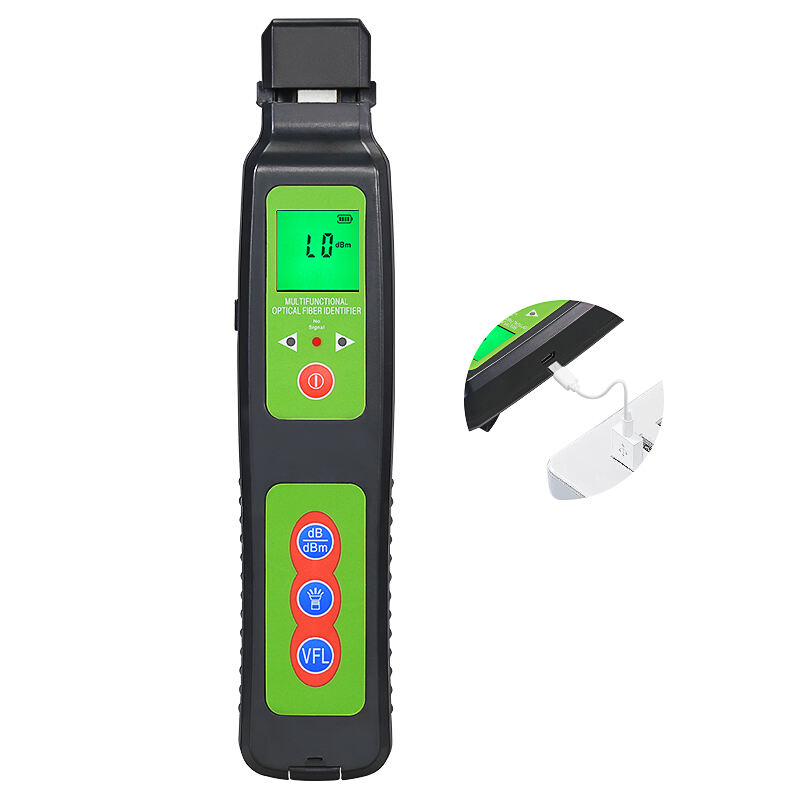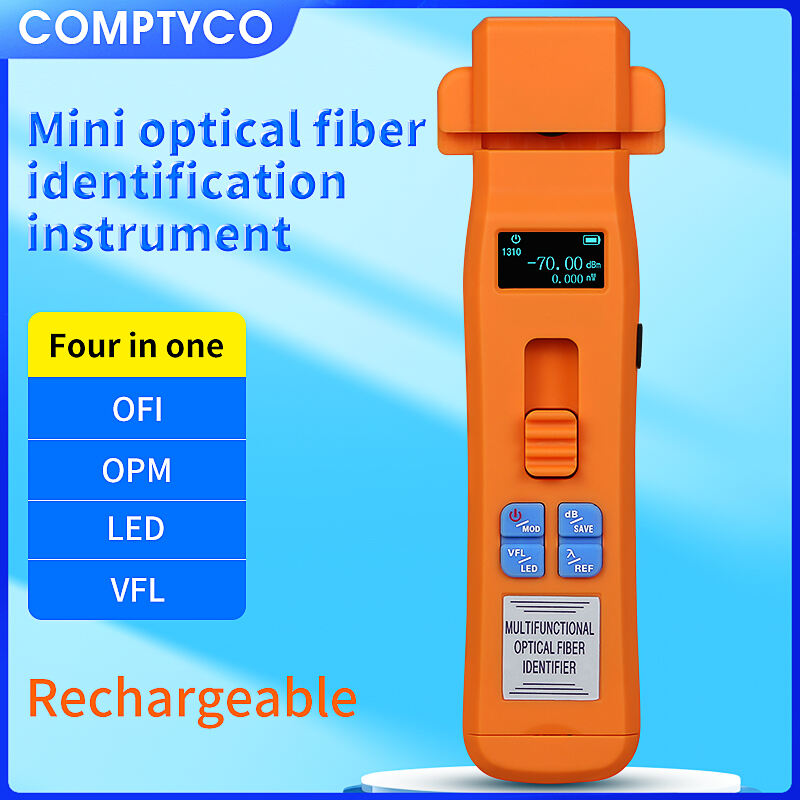Understanding the Essential Role of Optical Identification in Fiber Networks
Modern telecommunications infrastructure relies heavily on fiber optic networks, making efficient troubleshooting and maintenance crucial for network reliability. A fiber optic identifier serves as an indispensable tool for technicians and network engineers, enabling them to accurately detect and verify optical signals without disrupting active communications. This sophisticated device helps professionals maintain network integrity while reducing downtime and preventing costly mistakes during maintenance operations.
When working with complex fiber installations, technicians must ensure precise identification of specific fibers within cable bundles. The proper use of a fiber optic identifier not only streamlines the troubleshooting process but also helps prevent accidental service interruptions that could affect thousands of users. Understanding how to effectively utilize this tool is essential for anyone working in fiber optic network maintenance and installation.
Essential Components and Features of Optical Identifiers
Core Detection Mechanisms
The heart of a fiber optic identifier lies in its sophisticated detection system. These devices employ advanced photodetector technology to sense the presence of light within the fiber without requiring any physical breach of the cable. The detector can identify both continuous and modulated signals, providing technicians with crucial information about the active status of the fiber line.
Modern fiber optic identifier units incorporate highly sensitive sensors that can detect even minimal signal presence, making them invaluable for working with low-power optical networks. The detection mechanism typically includes specialized clamps that ensure proper contact with the fiber while preventing any potential damage to the cable coating.
Display and Interface Features
Contemporary optical identifiers come equipped with user-friendly displays that provide clear, immediate feedback about signal presence and direction. These interfaces often include LED indicators or LCD screens that show signal strength, transmission direction, and in some cases, even the approximate wavelength of the detected signal. The intuitive design allows technicians to quickly interpret results and make informed decisions during troubleshooting procedures.
Advanced models may include additional features such as tone detection capabilities, allowing technicians to identify specific fibers that have been tagged with distinct signal patterns. This functionality proves particularly valuable when working with complex cable bundles in large-scale installations.

Proper Techniques for Using Optical Identifiers
Preparation and Safety Measures
Before beginning any fiber optic identification process, proper preparation is essential. Technicians must ensure their fiber optic identifier is calibrated and in good working condition. This includes checking the battery level, verifying the cleanliness of the detection area, and conducting a quick functional test on a known active fiber.
Safety considerations are paramount when working with fiber optic networks. Technicians should always wear appropriate personal protective equipment, including safety glasses, as fiber optic cables can carry high-power signals that could be harmful if directly exposed. Additionally, maintaining a clean work environment helps prevent contamination of fiber connections and ensures accurate readings.
Step-by-Step Identification Process
The identification process begins with carefully positioning the fiber within the device's detection area. Technicians should gently place the fiber in the identifier's groove, ensuring it sits properly without applying excessive pressure that could damage the cable. The fiber optic identifier will then provide immediate feedback about signal presence and direction.
When working with multiple fibers, it's crucial to maintain a systematic approach. Technicians should document each tested fiber's status and mark them accordingly to prevent confusion. This methodical process helps ensure accurate identification and prevents potential errors that could lead to service disruptions.
Advanced Troubleshooting Applications
Network Maintenance Scenarios
Regular network maintenance requires efficient fiber identification to minimize system downtime. Using a fiber optic identifier helps technicians quickly locate specific fibers that require attention without disrupting active services. This capability is particularly valuable in data centers and telecommunications facilities where multiple fiber cables run in close proximity.
During maintenance operations, technicians can use the fiber optic identifier to verify signal continuity and identify potential problems before they escalate into major issues. This proactive approach helps maintain network reliability and reduces the likelihood of unexpected service interruptions.
Emergency Response Applications
When network failures occur, quick and accurate fiber identification becomes crucial. A fiber optic identifier enables technicians to rapidly locate damaged or malfunctioning fibers within complex cable installations. This efficiency is essential for minimizing downtime and restoring critical services as quickly as possible.
Emergency scenarios often require technicians to work under pressure, making the reliability and ease of use of a fiber optic identifier particularly valuable. The ability to quickly and accurately identify specific fibers helps ensure that repair work is performed on the correct cables, preventing additional complications during the restoration process.
Best Practices for Maintenance and Calibration
Regular Maintenance Procedures
To ensure consistent performance, fiber optic identifiers require regular maintenance and care. This includes cleaning the detection area with appropriate optical cleaning supplies, checking and replacing batteries as needed, and storing the device in a protective case when not in use. Regular maintenance helps prevent false readings and ensures reliable operation when the tool is needed.
Technicians should establish a routine maintenance schedule for their fiber optic identifier, including regular functionality checks and cleaning procedures. This proactive approach helps extend the life of the device and maintains its accuracy for critical identification tasks.
Calibration Requirements
Periodic calibration of fiber optic identifiers is essential for maintaining accuracy. Most manufacturers recommend annual calibration, though frequency may vary depending on usage patterns and environmental conditions. Proper calibration ensures the device continues to provide reliable readings across different types of fiber optic cables and signal strengths.
Documentation of calibration history helps track the device's performance over time and ensures compliance with industry standards. Many organizations maintain calibration records as part of their quality assurance procedures, particularly in environments where precise fiber identification is critical for operations.
Frequently Asked Questions
How does a fiber optic identifier detect signals without breaking the fiber?
A fiber optic identifier uses non-invasive technology that detects light leakage through the fiber's cladding when the cable is slightly bent within the device. This method allows for signal detection without requiring any physical breach of the cable, maintaining network integrity while providing accurate identification.
What types of signals can a fiber optic identifier detect?
Modern fiber optic identifiers can detect both continuous and modulated signals across various wavelengths commonly used in telecommunications. They can identify traffic direction and, in many cases, provide information about signal strength and type, making them versatile tools for network troubleshooting.
How often should a fiber optic identifier be calibrated?
Most manufacturers recommend annual calibration for fiber optic identifiers to ensure optimal performance and accuracy. However, devices used frequently or in challenging environments may require more frequent calibration. Always consult the manufacturer's guidelines and maintain proper calibration records for quality assurance.







